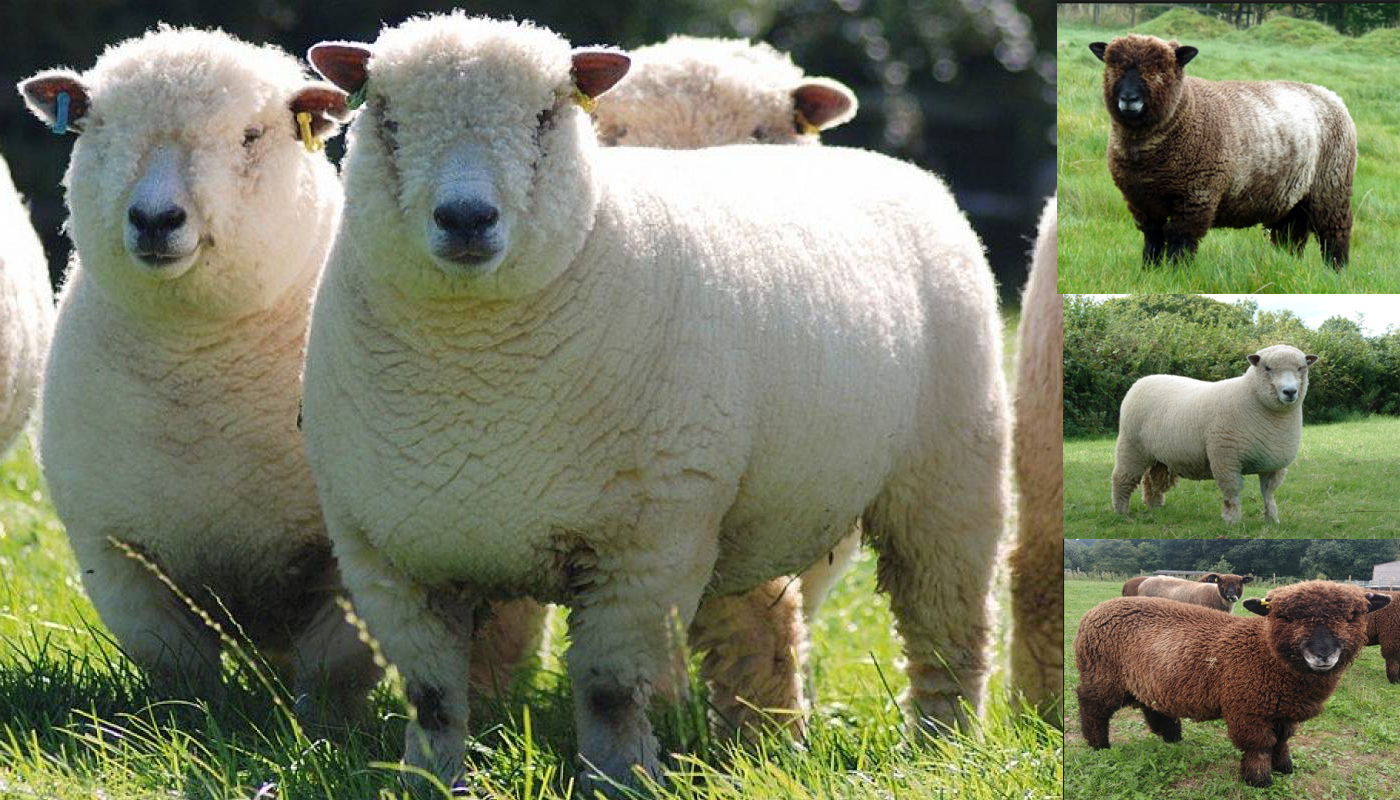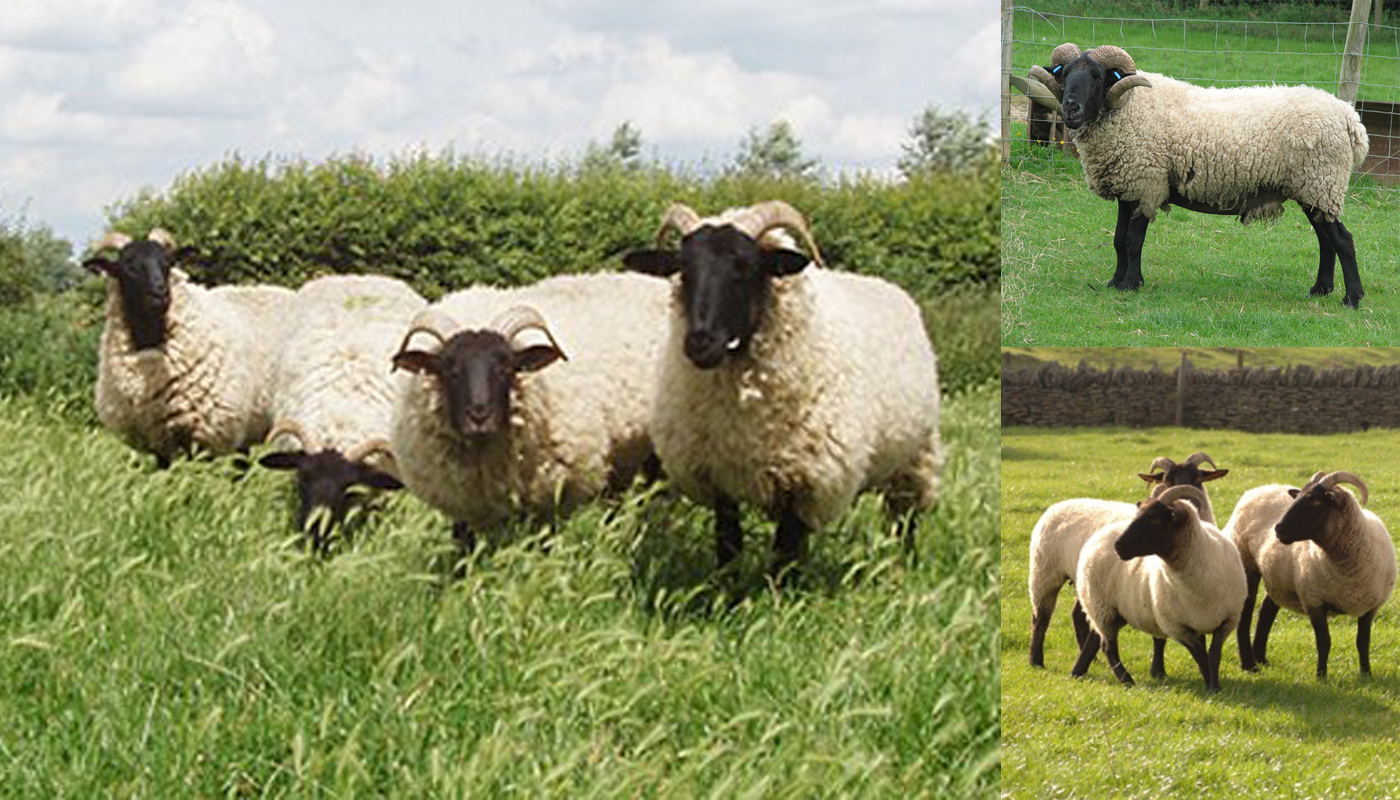
The Border Leicester Sheep is a breed that originated in Britain a couple of centuries ago. They are a robust, hardy breed with a very distinctive face and ears that stand up long on straight from their head.
They have a body full of good wool, good meat to bone ratio and a docile, even-tempered nature that make them really easy to handle. They love to graze and forage which also makes them easy to maintain.
BORDER LEICESTER SHEEP QUICK PROFILE OVERVIEW |
|
|---|---|
| These large white lambs are docile and easy to handle. They were first introduced to the States by George Washington. | |
| Country of Origin: | United Kingdom |
| Other Names: | None |
| Breed Size: | Large |
| Main Purpose: | Meat and wool |
| You may Also Like: | 11 Best Sheep Breeds for Meat Production |
| Can be used for | Breed, Meat, Wool **LSC (Landscape Management) |
| Temperament: | Docile, easy to handle. The ewes have excellent maternal instincts while the rams are quite the gentlemen. |
| Ideal Climate: | They tolerate almost all climates |
| Conservation Status: |
Not Listed by the *ALC Status/ Rarity: Common |
| Health Issues? | No known health issues |
| Good Starter Sheep? | They are novice to intermediate level sheep to maintain |
| Sheep Associations: | American Border Leicester Association |
| Sheep Clubs: | Please check with the American Border Leicester Association for and up to date list of any breeders’ clubs in or around your area |
| Note: *ALC stands for American Livestock Conservancy ** LSC stands for Landscape Management – the animal is used for controlling various vegetation growth |
|
PHYSICAL CHARACTERISTICS |
||||||||||||||||||||||||||||||||
|---|---|---|---|---|---|---|---|---|---|---|---|---|---|---|---|---|---|---|---|---|---|---|---|---|---|---|---|---|---|---|---|---|
| These lambs do not have wool on their face and legs. They have very compact bodies and short legs for their size. They have a long arched Roman nose which makes them look quite distinguished. | ||||||||||||||||||||||||||||||||
| Color(s): | White | |||||||||||||||||||||||||||||||
|
||||||||||||||||||||||||||||||||
EWE BREEDING & MILKING INFORMATION
| Their milk is not used in production/dairy and is only used to feed their young. They lamb once a year and make really good mothers as they have high maternal instincts. | |
| Breeding Period/cycle: | Usually lasts 16 to 59 hours |
| Estrous cycle: | Ave. 17 days/15 to 20 days |
| Gestation Period: | Usually, around 149 to 155 days but most gestation is 152 days |
| No. Lambs/Litter: | 1 and on the rare occasion 2 (twins) |
| Lactation Period: | Usually, around 150 to 240 day but most are milked for 180 days |
| Milking From: | 4 to 6 weeks after lambing |
| Milk Quality: | Good, Quantity: Enough to wean lambs Per: Lactation period |
| Milk Ideal for: | Feeding of the ewes young |
| You may Also Like: | 10 Best Sheep Breeds for Milk |
SHEEP MEAT PRODUCTION INFORMATION
| They are sought after for their fast maturing lambs and premium quality, succulently flavorful meat production. The lambs can reach up to 49 kgs by 4.5 months of age making them excellent for the production of premium quality lamb. | ||||||||||
| Meat Production: | Yes, Quality: Premium quality | |||||||||
|
||||||||||
| You may Also Like: | 11 Best Sheep Breeds for Meat Production | |||||||||
SHEEP WOOL PRODUCTION INFORMATION
| They have a long lustrous wool that will often yield around 70% wool after scouring which makes then one of the best wool producer. Their fleece will give around 3.6 to 5 kgs of grease wool annually. | ||||||||||||||||
| Wool Production? | Yes, Quality: Good spinning quality due to its crimp and luster | |||||||||||||||
| Wool is used to Produce: | Medium to heavy weight garments | |||||||||||||||
|
||||||||||||||||
| You may Also Like: | 18 Best Wool Producing Sheep Breeds | |||||||||||||||
GOOD TO KNOW ABOUT THE BORDER LEICESTER SHEEP
| Some more pointers that may be good to know about the Border Leicester Sheep breed | |
| Child-Friendly? | They are mild mannered with no horns, but they are still large animals and children should never be left unsupervised around them. |
| Landscape Management? | They are excellent foragers and grazers that are bound to keep the fields and bushes well landscaped |
| Where to buy them? | Please check with the American Border Leicester Association for any breeders, clubs or farm outlets that may sell the Border Leicester sheep breed. |
GENERAL INFORMATION
They may not be on the endangered list in America, but they are one of England’s listed rare “Heritage Breeds” of sheep.
George Washington introduced the Border Leicester breed of sheep to the United States. He kept a breed pair of Border Leicester sheep on his Mt. Vernon farm.
They are not really bred for their sheep skin production but as a meat sheep, their skin may very well be used for various sheep skin manufacturing.
HISTORY
The Boarder Leicester sheep breed was developed in England in 1967. They get their name from the place where they were developed and the stock from which they developed from. They were developed in Northumberland on the border of Scotland with their foundation stock being that of the Dishley Leicester rams.
The Dishley Leicester sheep breed was developed by Robert Bakewell in around 1726 to 1795. He developed the Dishley Leicester breed by crossing that of the Leicestershire type sheep and the old Lincolnshire sheep breed. The Dishley Leicester sheep were very popular with the local farmers around the area.
The Culley brothers, Matthew and George, bought some of Robert Bakewell’s Dishley Leicester’s. The Culley brothers lived across the border and by the 1830s the breed was found on both sides of the border. There were also by then two distinct types of the breed that were developing across the borders.
The Culley brothers were breeding the Dishley Leicester’s with the Teeswater sheep breed. Other farmers were crossing them with breeds such as the Cheviot breed. These different breeds of the Dishley Leicester’s became known as the “Bluecaps” and the “Redlegs”.
The Redleg breed of the Dishley Leicester’s was the most popular as they were a hardier breed and in 1850 the Redleg Dishley Leicester’s became known as the Border Leicester’s. The Border Leicester breed became quite a common breed that was found in the UK in the 19th century.
It is not known the exact date that the first Border Leicester sheep breed was imported to America. But it is safe to assume that they arrive there in 1888 as that was when the American Leicester Breeders Association was started. The 1920 census listed that there was a population of 767 purebred Border Leicester sheep in the United States of America.
Video
USEFUL LINKS
- United States Lamb Resource Center
- American Sheep Industry Association
- American Sheep Industry Association List of Breed Associations & Standards
- American Milk Sheep Association
- Dairy Sheep Association of North America
- American Wool Council
- Fur Commission USA
- North American Meat Institute
- American Lamb Board
- National Lamb Feeders Association
- American Livestock Conservancy
- Animal Shelter (ASPCA)
- American Veterinary Medical Association
- American Animal Welfare Society
- American Animal Control
- American Animal Husbandry Society
- United States Department of Agriculture
 10 Best Sheep Breeds for Milk
10 Best Sheep Breeds for Milk 10 Hair Sheep Breeds
10 Hair Sheep Breeds Charollais Sheep Breed – Everything You Need to Know
Charollais Sheep Breed – Everything You Need to Know Welsh Mountain Sheep Breed – Everything You Need to Know
Welsh Mountain Sheep Breed – Everything You Need to Know Badger Face Welsh Mountain Sheep Breed – Everything You Need to Know
Badger Face Welsh Mountain Sheep Breed – Everything You Need to Know Awassi Sheep Breed – Everything You Need to Know
Awassi Sheep Breed – Everything You Need to Know Ryeland Sheep Breed – Everything You Need to Know
Ryeland Sheep Breed – Everything You Need to Know American Tunis Sheep Breed – Everything You Need to Know
American Tunis Sheep Breed – Everything You Need to Know Merino Sheep Breed – Everything You Need to Know
Merino Sheep Breed – Everything You Need to Know Delaine Merino Sheep Breed – Everything You Need to Know
Delaine Merino Sheep Breed – Everything You Need to Know Norfolk Horn Sheep Breed – Everything You Need to Know
Norfolk Horn Sheep Breed – Everything You Need to Know Barbados Black Belly Sheep Breed – Everything You Need to Know
Barbados Black Belly Sheep Breed – Everything You Need to Know